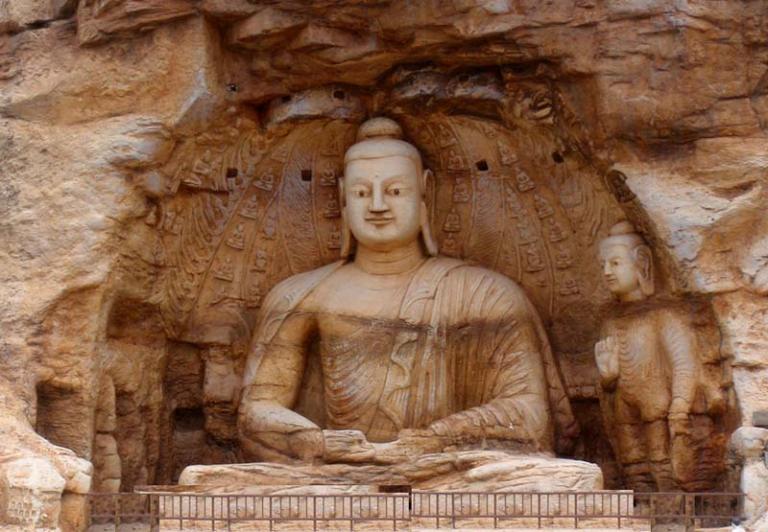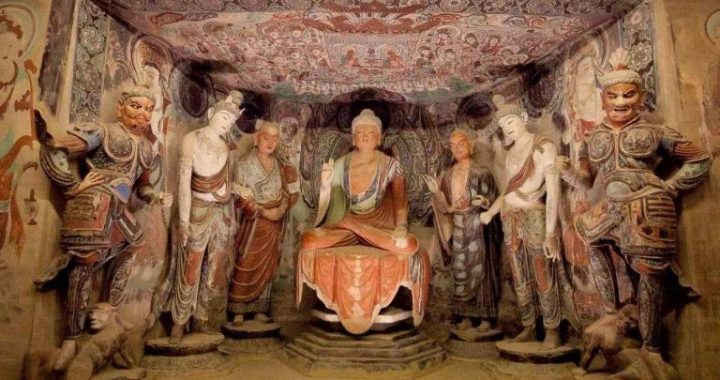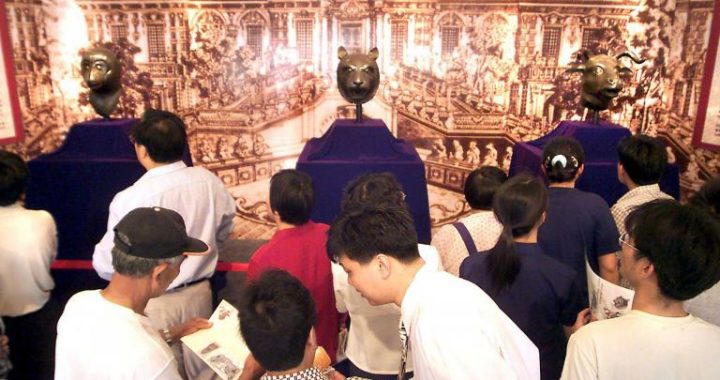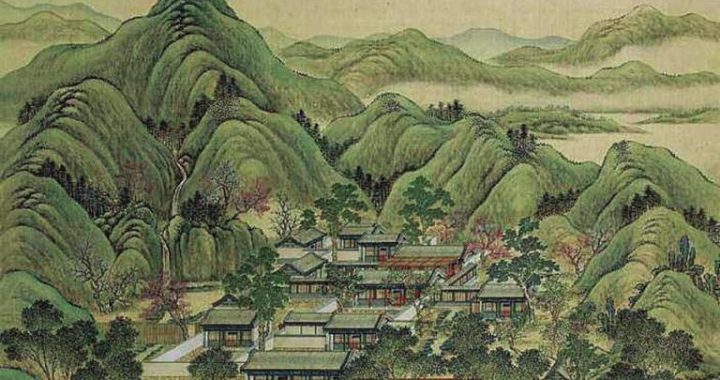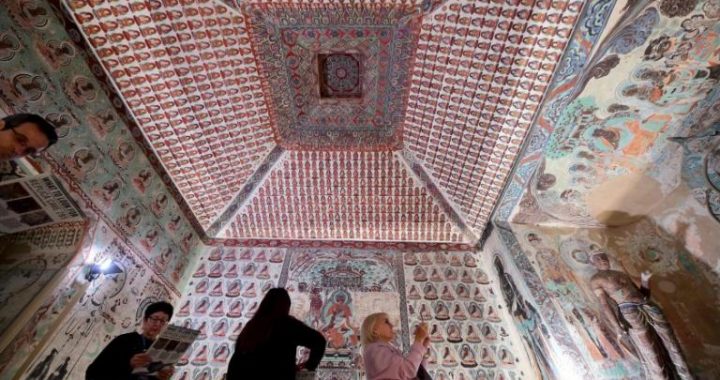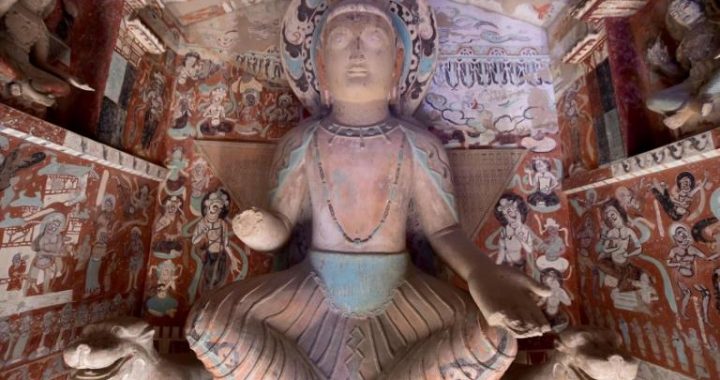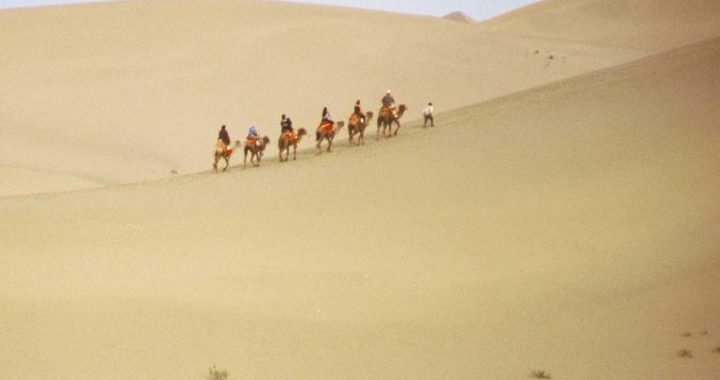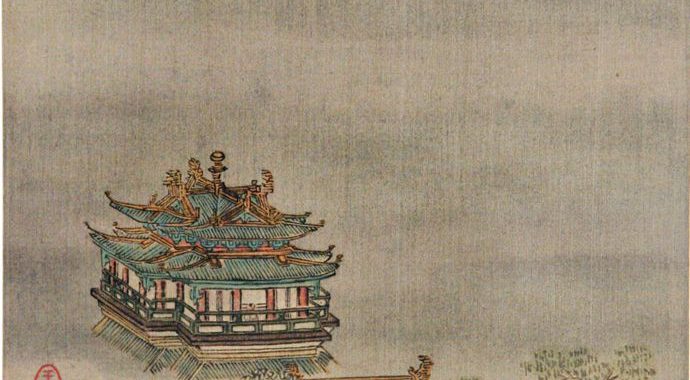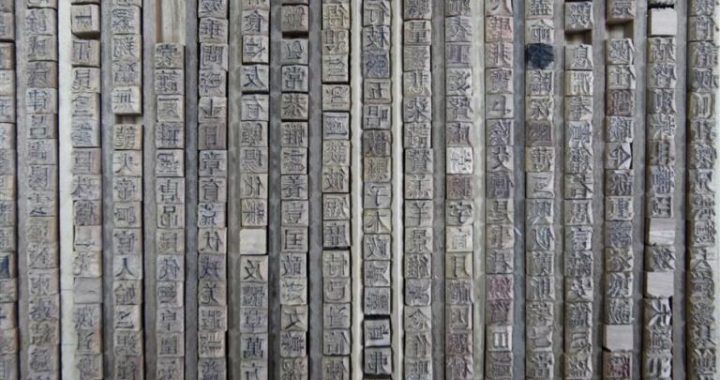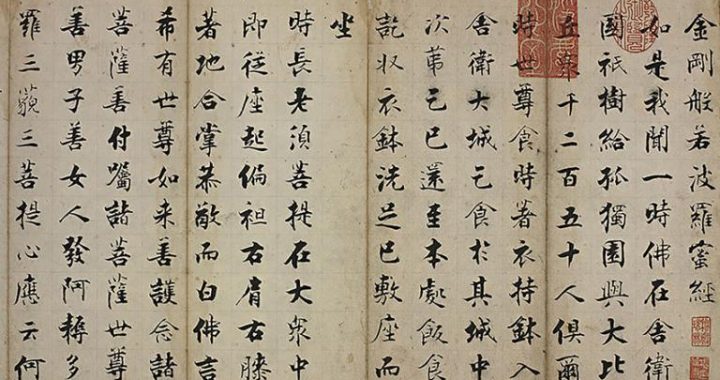The Mogao Grottoes
6 min readIn the second year of Jianyuan(366)of the Former Qin over 1600 years ago,a monk named Le Zun was roaming with his tin-capped cane and one day he came between Mingsha and Sanwei mountains.He found it an ideal place for meditation-a secluded valley with tall trees piercing the sky and the Daquan river babbling by.When dusk came and the sun was setting in the vast stretch of desert,Le Zun was considering where to put up for the night.All of a sudden,he saw over the cliff of the deposited gravel Mingsha Mountain a golden ray of sunlight shining with thousands of buddha images.Le Zun was puzzled by the dazzling sight and began wondering why the infinitely compassionate Buddha stayed in the open in such a holy place.Having determined to build a golden statue of the Buddha with a temple,he began begging for alms and had a grotto cut on the cliff.This is the genesis of the world-known Mogao Grottoes.
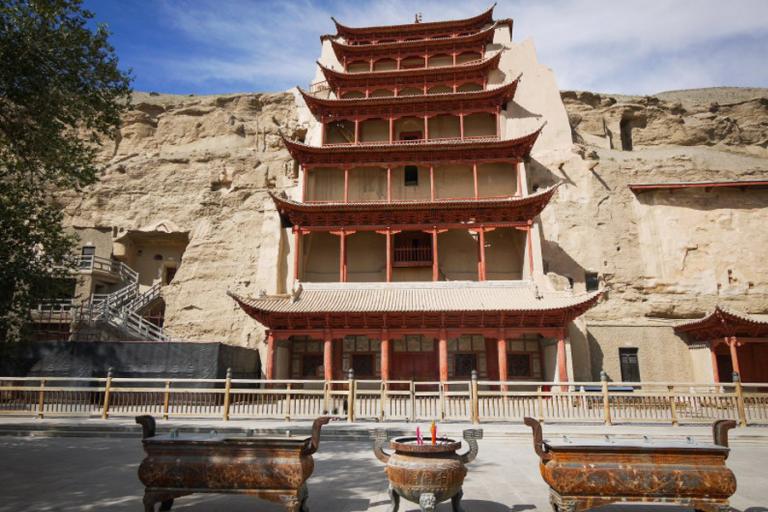
The Mogao Grottoes is located at the east foot of Mingsha Mountain 25 kilometers southeast of Dunhuang city.It overlooks Dangquan River and faces in the east Sanwei Mountain,a branch of Qilian.The construction of caves and statues started in the 4th century and did not stop until the 14th century.A cave group 1,680 meters long was built from north to south with a number of 735 grottoes found,arranged on one to four levels on the cliff over 30 meters high.The Mogao Grottoes consists of the southern and the northern sections.The 492 caves in the former were designed forrituals and activities of Buddhist worship.There are over 2,000 painted statues,more than 45,000 square-meter murals,and 5 wooden eaves for caves of the Tang an Song dynasties.The 243 caves in the latter section,according to excavation and research in recent years by Dunhuang Academy specialists,were built chiefly for monks to live in,do practice,and be buried after death.These caves are found with pits for routine purposes,ovens,chimneys,niches,and lamp sockets but mostly without painted statues or murals.
The Mogao Grottoes:Their Building and Religious Function Not long after the first cave was opened on the Mingsha cliff,Venerable Le Zun started on another journey.Many years later,Master Fa Liang roamed here from the east,paid his homage to this place,and followed Le Zun’s example by openinganother cave.Since then,cave building came into fashion.In the coming three decades,a number of over 70 grottoes were built at Mogao and many of them were great in scale and magnificent in making.With the increase of Buddhist followers,the number of caves was growing big.
Among the cave builders were not merely monks;ordinary men and women of this faith joined in,too.They regarded it as an accumulation of virtue.Among them were royal members,nobilities,local officials,wealthy merchants,plain townsfolk,and craftsmen.And grottoes of various sizes were built here.
Some caves were built by individuals,while others were the product of many people from a family,a clan,or a community.Alms were offered according to political status and economic conditions.They continuously added to the artistic wealth of the Mogao Grottoes.These people are called donors.
The building of caves and sculptures at the Mogao Grottoes lasted overa thousand years without interruption from 366 through the Northern Wei,Western Wei,Northern Zhou,Sui,Tang,Five Dynasties,and Song to the Yuan dynasty.This was inseparably related with its religious functions.
The Mogao Grottoes found itself in an era of widespread faith in Buddhism in Dunhuang and even entire China. Though a location for the daily practice and life of monks, it served more as a place for common devotees to express their faith and pursue their ideal.A1l people, including officials, aristocrats, and ordinary people from Dunhuang, as well as merchants, soldiers, monks, and envoys from elsewhere, came here to pay their homage and pray according to their own needs.
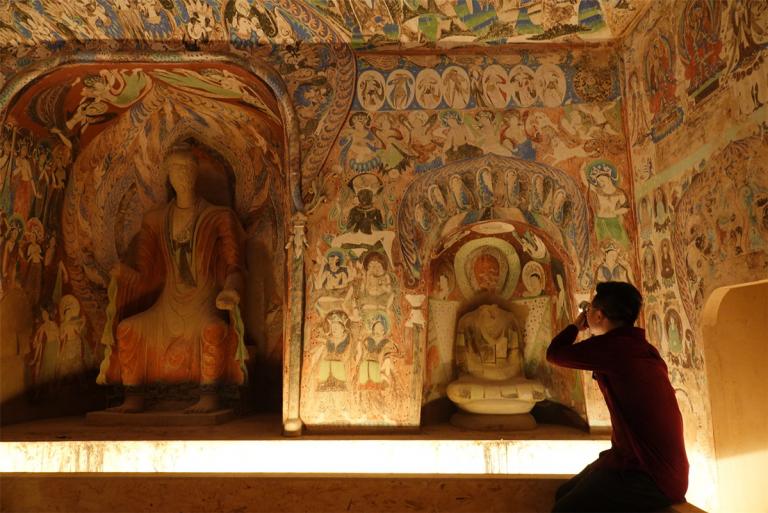
Records in the Dunhuang manuscripts and on the cave walls are abundant. Examples: in Cave 428 built by Yu Yi, Duke of Jianping,a Northern Zhou governor,a number of 1,189 donors were painted; on 15th day of the eighth month in the third year of Guangshun (953), Commissioner Cao Yuanzhong presided over a big abstinence ceremony at which 2,000 people attended.
Secular followers received religious influence and cultural education while paying their respects to the Buddha, bodhisattvas, and divinities. They learned the Buddhist contents and doctrines from the colorful paintings on the walls. In ancientChinese society, ordinary people were not educated enough to read and comprehend the sutras; however, the Buddhist contents portrayed on the walls were easy for them to understand. The painters translated profound Buddhist sutras and philosophy into popularized visual form, adopting familiar and adaptable methods of representation, particularly those that suited to the acceptability and habit of the Chinese, taking the actual demand of ordinary people in their daily life. Furthermore, in bigger caves with richer contents, preaches were often delivered by sutra masters and learned monks to solidify the Buddhist faith. It is imaginable that the thousandyear history of grotto building at Mogao was inseparable from the part Buddhist events assumed and the everlasting charm of artistic brilliance. As far as the Mogao Grottoes itself is concerned, the greatest role it had played in that part of history of over 1,000 years was no more than its propaganda and education.
A abstinence ceremony at the Mogao Grottoes, known as fu hui (blessed ceremony), was generally held by the cave owner at the opening or completion ceremony offering various diets like cakes and porridges, as is recorded in relevant manuscripts related with the construction of caves. In contrast, Cao Yuanzhong’s ceremony in 953 recorded in Cave 469 is a special case. As a matter of fact, it was a political event making use of the Mogao Grottoes for the purpose of solidifying and reinforcing his Return-to-Allegiance Army power.
Burning lamps before the Buddha image at the Mogao Grottoes was also a regular event for the Buddhist devotees; however, it might be formal or informal. According to Dunhuang Academy 0322, the large-scale lamp-burning activity on the night of the 8th day of the twelfth lunar month of 951 did not seem to be held several times every year. Lamp-burning at the Mogao Grottoes was regular on the 15th day of thefirst lunar month; other cases were irregular, held any time when needed, just like daily prayers. However, what is mentioned above were activities organized by religious communities in Dunhuang. When it comes to ordinary people, they did at their own will. In many caves, traces of burned lamp stand are still preserved.
According to relevant Buddhist rules, the lamps in front of the Buddha image should be ever burning. It was continued day after day by officials, aristocrats, monks, and common people who entered the caves for worship.
Sutra-copying was also done in the Mogao caves. As the grottoes were constructed on several levels on the cliff, the room for activities was rather limited. However,a few big caves on the bottom level were built with wooden eaves, so that the space was broadened. Cave 98, alias “King Cave,”may serve as an example. In the fifth month of 966, Military Commissioner Cao Yuanzhong and his wife Madame Zhai came for the summer. He “employed a few monks and laymen… to copy the scripture of Buddha names in the King Cave, one for each of the 17 monasteries.”This is one of the biggest caves on the ground level at Mogao with broad space. Its front chamber was a wooden hall approximately 6 meters tall with an area of 2,000 square meters. Sutra-copying must have been executed here. It might be the same case with similar halls of other huge caves.
